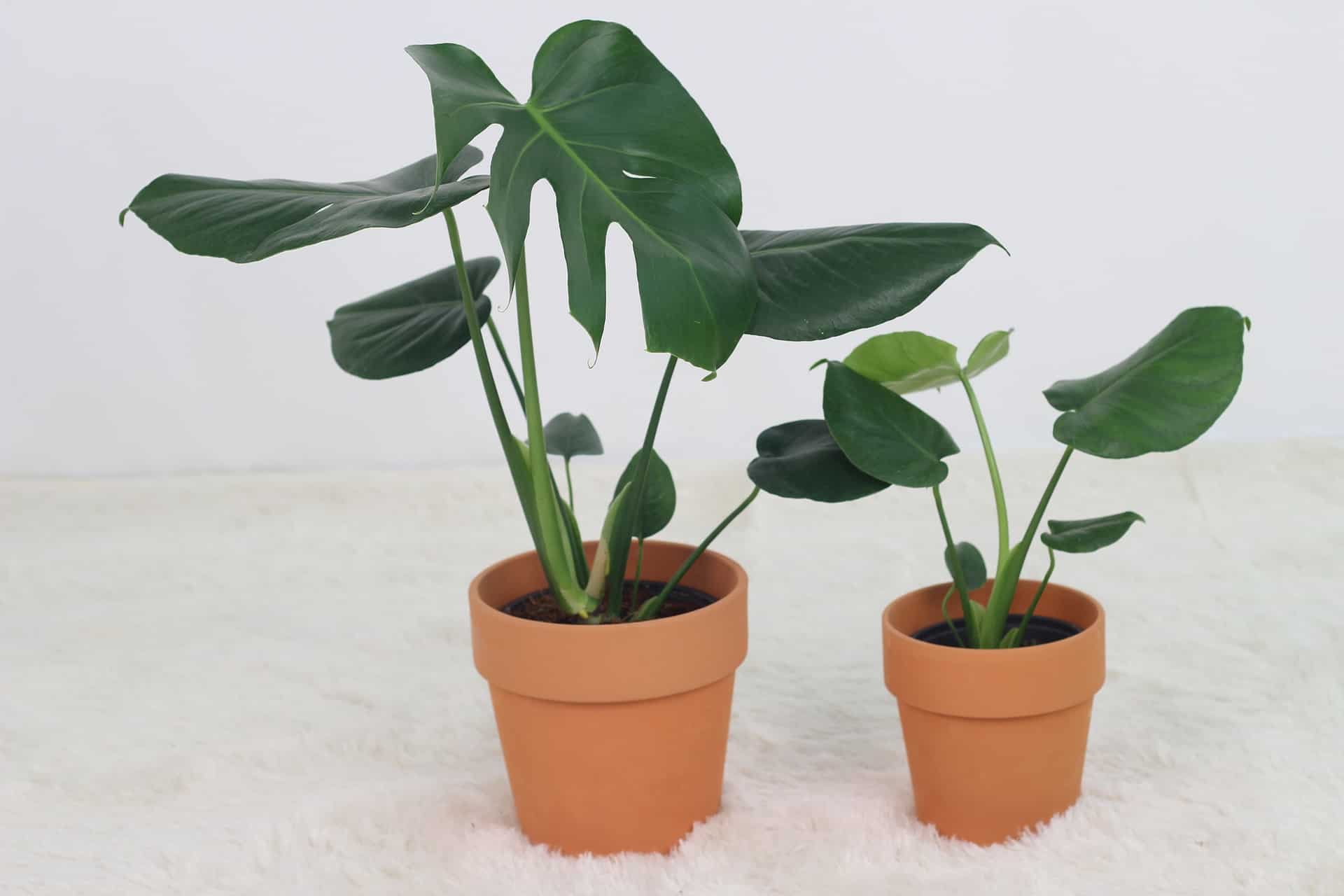One of the first things you need to learn about any new houseplant is when and how much to water it. Over-watering can lead to issues like root rot or fungal growth, and under-watering can dry your plant out beyond repair and cause crispy brown leaves.
It’s a delicate balance!
So how much water should you give your new monstera? How often should you water? How can you prevent watering problems?
Luckily, monsteras are fairly forgiving, so let’s go through watering basics for this beautiful plant.
The short and easy answer to the watering question for your monstera is that they don’t like to be dry or overly moist. They like their soil to stay somewhere in between.
When to Water a Monstera
Monsteras like “moderate” watering. In the houseplant world, moderate watering means you should water when the soil feels moist one or two inches below the surface.
How can you test this?
There are three ways:
Finger test: Gently poke your finger into the soil until you’re about two knuckles deep. If the soil still feels moist that far down, you can hold off on watering. If it’s dry, it might be time to give your monstera a drink!
Poke a stick method: Insert a wooden stick like a chopstick or dowel into the soil. If it comes out clean, the soil is dry and it’s time to water. If it comes out damp with bits of dark soil stuck to it, your monstera is still on the moist side.
Moisture meter: This is a more advanced method, but it can really give you a peek at how much water your monstera’s roots are holding onto. You can buy one of these online or at stores like Lowe’s and Home Depot. Most of them will be color-coded to let you know when the reading is dry or wet.
To use a moisture meter, simply insert the sensor into the soil about halfway between the base of the plant and the side of the pot and about halfway down into the pot. When the meter reads at about a 3, the soil is drying out and ready for water.

How to Water a Monstera
Okay, so you’ve determined that your monstera is ready for a drink. How much water do you give it? And how?
We find that the best way to water your monstera is to put it in the sink or use a watering can to slowly add water until it starts to run out the drainage holes. Empty the drainage tray immediately.
Don’t soak the soil, and continue to empty the drainage tray as excess water runs out.
Try not to get the leaves wet. Instead, add water to the soil instead of dumping over the top of the plant.
Remember, drainage is key.
Monsteras don’t like to be over-watered, so make sure your pot has excellent drainage and that the soil drains quickly. If the soil is compacted or water doesn’t empty into the tray, you might need to switch to a soil that drains better.
Make sure you get the light right as well.
It’s also important to make sure that your monstera gets plenty of bright, indirect sunlight, which will help it use water efficiently and dry out in a timely matter. Otherwise, your monstera might stay wet for too long and develop root rot.
More Monstera Watering Tips:
- Use room-temperature filtered water when watering your plants, or let the water sit out overnight so chemicals like chlorine can evaporate.
- You may need to water less in the winter, so always check the soil before you add more water. Plan on watering weekly to every other week in the summer and every few weeks in the winter.
- It’s better to slightly under-water your monstera than over-water it. You can add more water, but removing water is a lot harder!
Signs your monstera is over-watered:
- Dark brown spots on leaves
- Yellowing leaves
- Mold on the surface of the soil
- Mushy stems
Signs your monstera is under-watered:
- Drooping leaves
- Wrinkled, crispy leaves
- Yellowing with dry brown spots
- Soil pulling from the edges of the pot
Watering your monstera isn’t hard! The trick is to start things off on the right foot with the right soil and a pot with drainage, and keep close tabs on your soil to monitor the moisture level. Your plant will tell you if it’s getting too much or not enough.
That’s all there is to it!
To learn more:
- Sign up for our free Ultimate Monstera Webinar.
- Subscribe to our newsletter.
- Click to join our community on Facebook: Monstera Plant Resource Group.
- Read our Ultimate Monstera Watering Guide here.
- Be sure to grab your essentials here: Monstera Plant Food, 3-in-1 Moisture Meter, Premium Potting Soil, Houseplant Leaf Armor (which protects your houseplant from bacteria, fungus, and insects—and also cleans and adds shine to its leaves!)
- Looking to shop for plants online? Our trusted partners at Houseplantshop.com grow high-quality plants here in California and ship directly to you. Shop online now!





